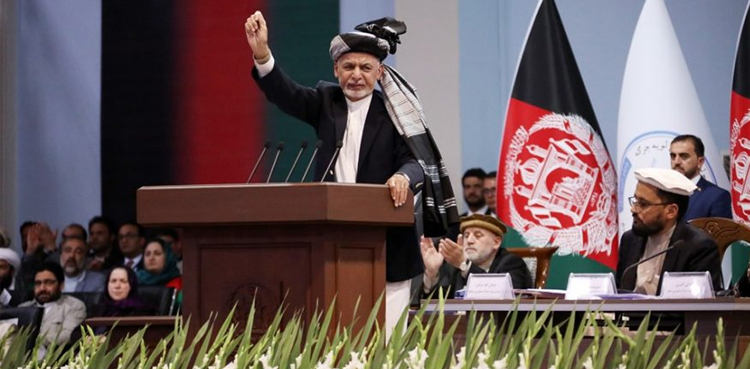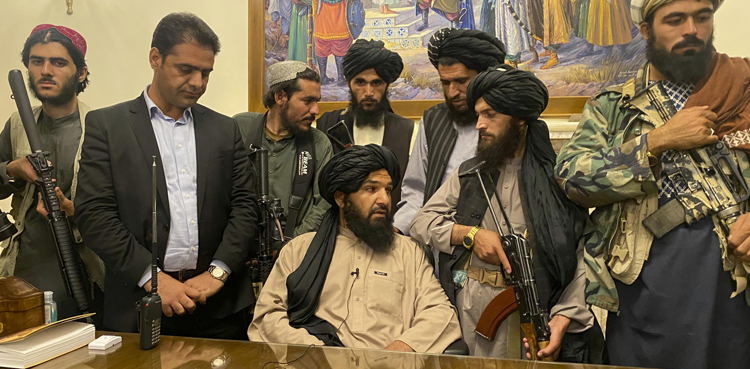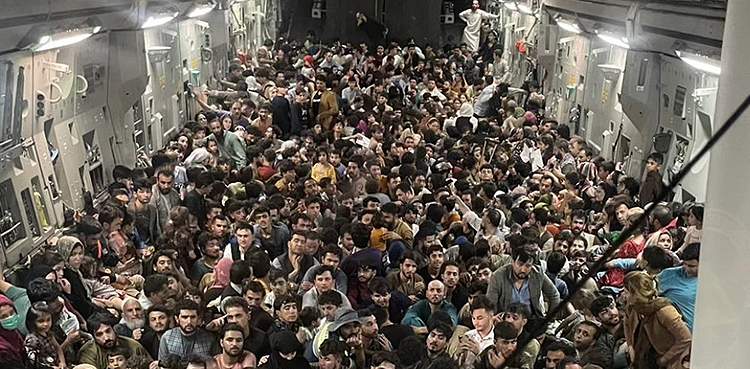Analyzing the fall of Afghanistan’s Ashraf Ghani government

The unexpected collapse of NATO-sponsored regime led by Ashraf Ghani in Afghanistan is widely analyzed with a view to figure out the reasons for this failure.
The sudden collapse of the regime was also strange as for a large part of two decades it had complete support of the western alliance that practically occupied Afghanistan after the 9/11 outrage.
As was quite obvious the primary blame of the collapse of the Afghan regime is placed on the defeat of the army that could not sustain its operational capability after the gradually dwindling support of the western forces. Keeping in view the typical circumstances, after occupying Afghanistan, the NATO alliance raised a defence force and tried to transform it into a national army but the abject failure of this effort ultimately proved to be the final failure of the regime that they installed whether led by Karzai or Ashraf Ghani.

It is now the considered opinion that it was the Afghan army that was considered the bedrock of the planted Afghan regime and when it failed to ensure its writ on the country, the end occurred. The civil political structure constructed by the western forces was completely out of sync with the ground realities in Afghanistan and it was left with no option but to heavily rely on the army.
Ashraf Ghani: departing Afghan president who failed to make peace with Taliban
It was also quite obvious that the western alliance was conscious of the army angle and accordingly equipped and trained the Afghan army that was propagated as a well-drilled armed outfit particularly its Special Services Group whose raising also saw the involvement of an American private firm Raytheon and this force was portrayed as highly committed to the cause of the defence of the country.
The sudden collapse of the Afghan defence forces becomes all the more glaring when viewed in the backdrop of the fact that the Soviet-backed Afghan state survived for three years after the Soviet withdrawal actually outlasting the Soviet Union itself becoming a chastising indictment of the US-raised Afghan army.

In this context many observers point out that right from the outset the Afghanistan’s security forces were flawed by American design as this style of forming up an effective, independent, Western-style national security force in Afghanistan that, in essence, is a large, impoverished country with a far-flung majority-rural population and where tribal, ethnic and regional allegiances far outweigh any semblance of a national identity was synonymous with actually squaring a round peg and it was always going to be an extremely difficult task and it became abundantly clear that the US and its coalition allies failed in that effort.
It was clear also that the Afghan military was essentially designed to be over-reliant on the US and thus designed to fail without it.
Throughout their stay in Afghanistan the US military relied heavily on combining ground operations with air power, using aircraft to resupply outposts, strike targets and collect reconnaissance and intelligence.
In the wake of President Biden’s withdrawal decision, the US pulled its air support, intelligence and contractors servicing Afghanistan’s planes and helicopters. That meant the Afghan military simply could not operate anymore. A disillusioned, demoralised fighting force, rife with corruption, Afghan army was reputed to number more than 300,000 but the real number was as little as half of that as the official numbers were undoubtedly inflated due to corrupt practices.
Figures on the size of the Afghan forces were consistently marred by the problem of so-called ghost fighters: no-show soldiers and police officers who were listed on the employee rolls only so corrupt people could collect their salaries.
It was even admitted by high-ranking US military trainers that they did not successfully build the Afghan force as institutions and that they failed to establish the necessary infrastructure that dealt effectively with military education, training, pay systems, career progression, personnel, accountability — all the things that make a professional security force. Rotating teams through tours of six months to a year the American trainers could not resolve the vexing problems facing Afghanistan’s army and police: endemic corruption, plummeting morale, rampant drug use, abysmal maintenance and inept logistics. At best what trainers did was to raise platoons and companies good to conduct raids and operate checkpoints but little worked behind them.
In addition, Afghan forces remained overextended across the country after the US announced and began its withdrawal. When US forces were still operating the Afghan government sought to maximise its presence through the country’s far-flung countryside, maintaining more than 200 bases and outposts that could be resupplied only by air. Extending government operations to the most of Afghanistan’s more than 400 districts has long been the main pillar of America’s counterinsurgency strategy.
Another factor that was ancillary to the failure of the Afghan regime was the failed state-building efforts.
The US’s 2001 invasion of Afghanistan led to externally-imposed, securitised state-building processes that had devastating consequences for the country and their security sectors. As a consequence the uprisings emerged after the US military intervention led to a security vacuum. Occupying US forces had to assume the role of the domestic security provider while also working to create a new local military from scratch.
The imposition of rigid, hierarchical American military doctrine without considering the differences in the Afghan cultural context also contributed to the failure. Moreover there were weak leaders such as Ashraf Ghani who led and survived as a cipher on the instructions of his contacts in the American politics and academia having scant connections with his home country. Such these leaders allowed networks of patronage and corruption to take root during the rebuilding processes, enabling the eventual success of the Taliban.

It is also pointed out that, despite their massive official troop numbers, the Afghan forces were struggling with significant structural deficiencies from the very beginning. High-ranking officers were known to have inflated their rosters with fictitious names and this practice emerged because the military served as a patronage network for the country’s leaders and officer posts were awarded to political loyalists rather than those with military acumen.
These politically connected officers used their positions to extract wealth for themselves by taking a cut from the transit fees the soldiers under their command routinely collected from the public at checkpoints.
The efforts of the western alliance were also hindered by factors beyond its control, including the lack of education in one of the world’s poorest countries and the pervasiveness of corruption. There is hardly any doubt that Americans tried building the Afghan state as well as its army in their own image, particularly the army that was heavily reliant on airpower and technology that the Afghans could not maintain by themselves but the fact is that the Afghan forces were far too small to defend a far-flung nation of thirty-eight million people, and no US administration wanted to fund a larger force.
The speed with which the Taliban captured the country is not a reflection of military capability but it is a reflection of a collapse in will to fight. And how much will to fight there was among Afghan security forces, even to begin with, is an open question, particularly when facing an adversary with militant devotion to their own cause.
from ARY NEWS https://ift.tt/tk7ERPV
Comments
Post a Comment